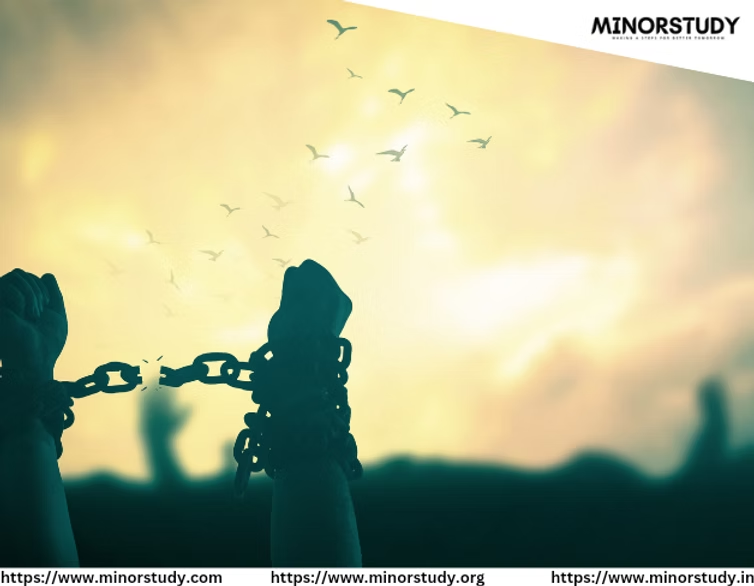Shocking Facts That Prove the Urgent Need for the International Day for the Abolition of Slavery
International Day for the Abolition of Slavery: Despite the common belief that slavery is a relic of the past, millions of people around the world today continue to live under modern slavery — exploited, abused, and voiceless. The International Day for the Abolition of Slavery, observed annually on December 2, is a global reminder that freedom is still not universal.
- 📜 History of the International Day for the Abolition of Slavery
- 🕰️ Timeline of Key Milestones in International Day for the Abolition of Slavery
- 📊 5 Shocking Facts That Will Change How You See Slavery Today
- ❓ Frequently Asked Questions (FAQs) International Day for the Abolition of Slavery
- 🎯 Significance of the Day
- 1. Recognition of Human Dignity
- 2. Global Call for Action
- 3. Survivor Voices Matter
- 4. Educational Empowerment
- 🌍 Global Observance and Activities
- 💌 Thoughtful Wishes to Share on December 2
- 🔍 Key Points At a Glance
- 🧠 Importance in Our Lives
- 🚸 Impact on Daily Life
- 👥 Importance to Society
- 🔚 Conclusion: A World Without Slavery Is Still a Goal, Not a Reality
Let’s dive into the history, facts, timeline, significance, FAQs, and the deep human relevance of this day in the modern world.
📜 History of the International Day for the Abolition of Slavery
The International Day for the Abolition of Slavery was established by the United Nations General Assembly in 1986, building on the 1949 Convention for the Suppression of the Traffic in Persons and the Exploitation of the Prostitution of Others.
However, the roots of global anti-slavery efforts date back even further:
1807: The British Parliament abolished the transatlantic slave trade.
1865: The United States ratified the 13th Amendment, officially abolishing slavery.
1926: The League of Nations introduced the Slavery Convention, addressing various forms of slavery.
The UN made it a global observance in 1986, and since then, December 2 has stood as a call for collective moral action.
🕰️ Timeline of Key Milestones in International Day for the Abolition of Slavery
| Year | Event |
|---|---|
| 1807 | UK passes Abolition of the Slave Trade Act |
| 1833 | UK Slavery Abolition Act frees all slaves in the British Empire |
| 1865 | US 13th Amendment formally ends slavery |
| 1926 | League of Nations adopts Slavery Convention |
| 1948 | Universal Declaration of Human Rights prohibits slavery |
| 1986 | UN establishes December 2 as the International Day |
| 2000 | UN launches the Palermo Protocol against human trafficking |
| 2016 | Global estimates report 40.3 million people in modern slavery |
📊 5 Shocking Facts That Will Change How You See Slavery Today
Over 40 million people live in modern slavery
According to the ILO, 25 million are in forced labor and 15 million in forced marriages. That’s more than the population of Canada.1 in 4 victims of modern slavery is a child
Children are trafficked for labor, begging, child marriages, and even armed conflict.Slavery generates over $150 billion annually in illegal profits
Human trafficking, forced labor, and sex exploitation form one of the largest criminal industries.Slavery exists in every country
From domestic servitude in households to forced labor in supply chains, no country is completely free of it.Victims often don’t realize they’re enslaved
Exploitation is masked by debt bondage, manipulative contracts, or cultural coercion.
❓ Frequently Asked Questions (FAQs) International Day for the Abolition of Slavery
Q1. What is the difference between historical slavery and modern slavery?
Historical slavery was legal ownership of people. Modern slavery includes forced labor, human trafficking, forced marriage, and debt bondage.
Q2. Is slavery still legal anywhere?
No. Slavery is illegal in every country, but enforcement is often weak, and exploitative practices continue.
Q3. Who are the most vulnerable to modern slavery?
Women and children
Migrant workers
People in poverty or conflict zones
Ethnic minorities
Q4. What actions are taken by the UN?
The UN promotes the Palermo Protocol, the ILO Conventions, and partners with governments and NGOs for policy, advocacy, and survivor support.
Q5. What can individuals do to help?
Support ethical brands
Report suspected trafficking
Educate yourself and others
Advocate for stronger laws
🎯 Significance of the Day
1. Recognition of Human Dignity
Slavery—historical or modern—is the ultimate violation of human rights. This day reinforces that no one should own or exploit another human being.
2. Global Call for Action
It presses governments, corporations, and societies to review supply chains, labor laws, and trafficking policies.
3. Survivor Voices Matter
The day gives survivors a platform to share stories, advocate reforms, and reclaim agency.
4. Educational Empowerment
Brings slavery out of textbooks and into the real world, showing how deep and invisible exploitation runs.
🌍 Global Observance and Activities
United Nations events: Roundtable discussions, survivor testimonies, anti-trafficking campaigns
NGO campaigns: Awareness drives, film screenings, and art installations
Educational institutions: Debates, essays, and interactive sessions
Corporates: Supplier audits and ethical policy rollouts
Social Media: Campaigns using hashtags like #EndSlavery #AbolishSlavery #ModernSlavery
💌 Thoughtful Wishes to Share on December 2
“Let us not rest until every chain is broken. Freedom is a human right.”
“May this International Day remind us to fight against exploitation and stand for dignity.”
“Speak for the voiceless. Support the oppressed. Together, we can end slavery.”
“Abolition is not history—it’s still a mission. Let’s make freedom real for all.”
🔍 Key Points At a Glance
| Aspect | Details |
|---|---|
| 📅 Date | December 2 |
| 🎯 Goal | Eliminate all forms of modern slavery |
| 🌐 Scope | Global, observed in 193+ countries |
| 💡 Focus | Awareness, law enforcement, survivor support |
| 🔄 Relevance | Human rights, migration, gender, child protection |
🧠 Importance in Our Lives
You may not see chains or shackles in your day-to-day life. But the clothes you wear, the electronics you use, or even the food you eat could be touched by forced labor.
This day reminds us to:
Be conscious consumers
Treat domestic help and laborers with dignity
Support child protection laws
Empower vulnerable communities with education and opportunity
🚸 Impact on Daily Life
| Area | Modern Slavery Influence |
|---|---|
| 👚 Clothing | Garment workers often exploited in sweatshops |
| 🍫 Food | Cocoa farming linked to child labor in West Africa |
| 💻 Electronics | Cobalt mining involves forced labor in Congo |
| 🧹 Domestic Work | Many domestic workers live under abuse or isolation |
| 🧳 Migration | Migrants without documents are targets for trafficking |
👥 Importance to Society
Ending slavery builds a safer, fairer, and more humane world.
It promotes economic justice by ensuring fair wages
Strengthens global supply chain accountability
Encourages social equity, especially for women and children
Reduces the power of criminal networks and corruption
Upholds the principles of democracy and rule of law
🔚 Conclusion: A World Without Slavery Is Still a Goal, Not a Reality
Slavery may be illegal, but it has not been abolished in practice. It has morphed, hidden, and evolved—but it persists. The International Day for the Abolition of Slavery is a critical reminder, motivator, and call to conscience.
We must move beyond symbolic gestures and embrace:
Better laws and enforcement
Global cooperation
Education and advocacy
Support for survivors
Slavery is not just history—it is a current crisis. And freedom is still a battle worth fighting for.









Very great post. I simply stumbled upon your weblog and wished to mention that I’ve really enjoyed browsing your weblog posts. After all I’ll be subscribing on your feed and I’m hoping you write once more soon!